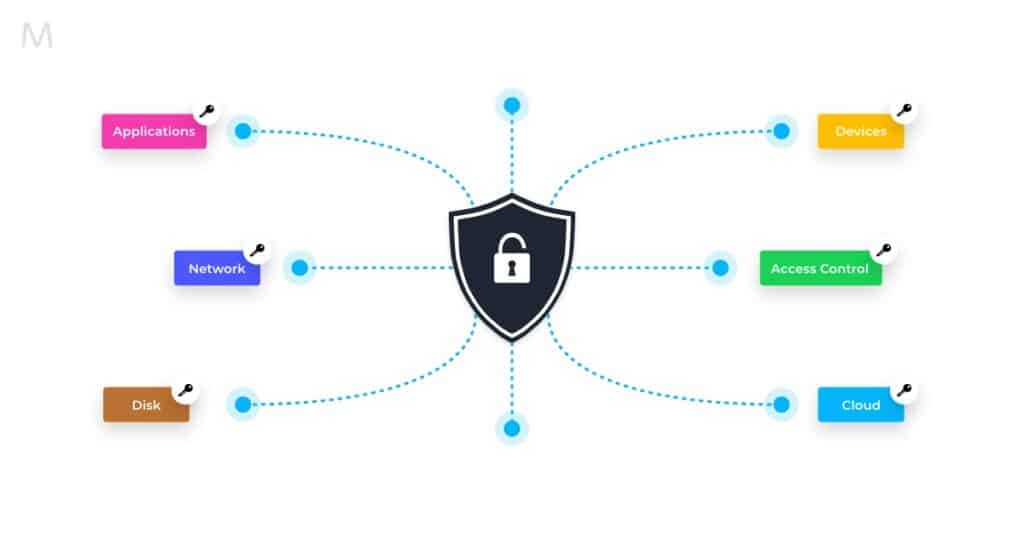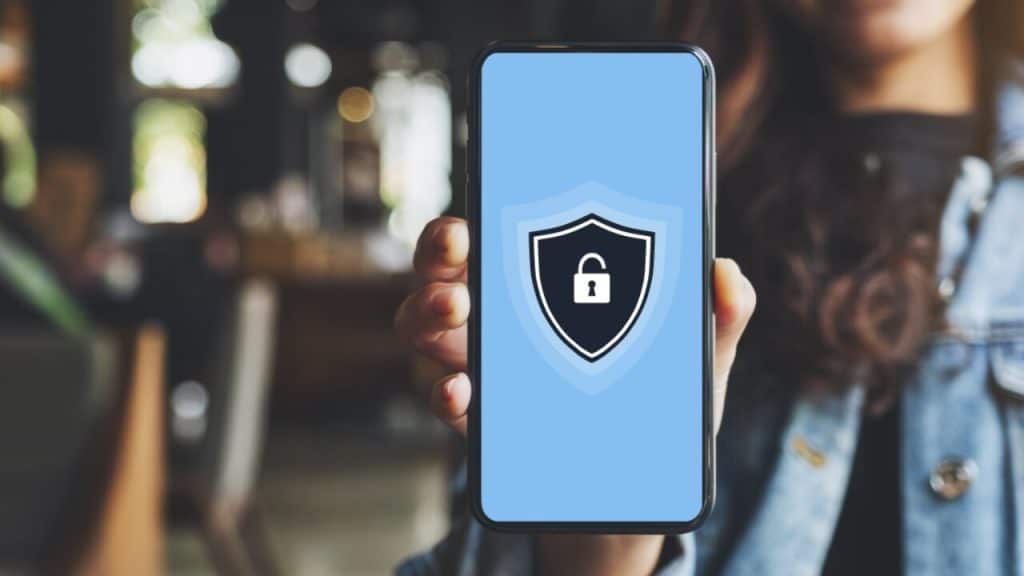In today’s digital era, the significance of ensuring a secure mobile app is paramount. As we increasingly depend on mobile applications for a variety of daily activities—ranging from personal communication and social networking to handling sensitive financial transactions and personal data—the stakes for maintaining robust app security have never been higher.
The landscape of mobile technology is rapidly evolving, not just in terms of innovation and convenience, but also in the complexity and sophistication of the threats posed against it. Cybersecurity threats are no longer limited to traditional computing platforms; they have aggressively spread into the mobile domain. This transition has elevated the importance of implementing application security best practices, transforming it from a mere recommendation to an absolute necessity.
For developers and businesses, the challenge is twofold. On one hand, they must ensure that their mobile applications offer seamless, user-friendly experiences. On the other hand, they must rigorously guard these applications against a growing array of security threats. These threats range from data breaches and malware to sophisticated phishing attacks and more. The task is not simply about safeguarding data; it’s about building and maintaining user trust, which is the cornerstone of digital engagement and business success in the mobile world.
Furthermore, with regulations like the General Data Protection Regulation (GDPR) in the EU, and similar laws in other regions, businesses are not only morally but also legally obliged to protect user data. Non-compliance and lax security can lead to severe legal and financial repercussions.
Thus, in this ever-connected digital age, the development of a secure mobile app is not just a technical objective but a critical business strategy. Embracing mobile app security best practices is an investment in a company’s longevity and reputation. It demonstrates a commitment to user safety and privacy, which in today’s market, is as valuable as the services or products offered.
As we continue to explore the depths of what mobile technology can offer, the role of security in this journey remains a constant companion. For developers, businesses, and users alike, understanding and implementing robust mobile app security measures is not just beneficial—it’s essential for safe and sustainable digital progress.
Understanding the Importance of Secure Mobile App Development
The need for secure mobile app development is more critical than ever. With an increasing number of transactions and sensitive data being handled on mobile platforms, the risks associated with security breaches have skyrocketed. Implementing mobile app security best practices is not just a matter of protecting data; it’s about safeguarding your reputation and maintaining user trust.

The Risks of Neglecting Mobile App Security
When mobile app security is not a priority, several risks can emerge, which are detrimental to both the app developers and their users:
Data Breaches: Perhaps the most significant risk is the potential for data breaches. When security is lax, sensitive user data such as personal information, financial details, and login credentials can be exposed to unauthorized parties.
Financial Loss: A security breach can lead to direct financial losses. This includes costs associated with responding to the breach, compensating affected users, and potential fines for failing to comply with data protection regulations.
Legal Liabilities: Developers may face legal action if they fail to protect user data adequately, especially under stringent data protection laws like GDPR in Europe and various state laws in the USA.
Brand Reputation Damage: A breach can severely tarnish a company’s reputation. Users lose trust in the app, which can lead to a decline in user base and, consequently, revenue.
Application Security Best Practices:
Developing Secure Mobile Apps
To develop a secure mobile app, certain best practices should be followed:
Prioritizing Security in the App Development Lifecycle: This means integrating security considerations at every stage of development, from design to deployment.
Secure Coding Practices: Developers should write code that adheres to security best practices to prevent vulnerabilities.
Data Encryption: Encrypting data both in transit (as it moves across the network) and at rest (when stored) is crucial to protect it from unauthorized access.
Regular Security Testing: This includes penetration testing and using tools to continuously scan for and address vulnerabilities.
Incorporating Security Tools and Software: Use advanced security tools and software to strengthen the app’s defense against attacks.
Addressing User Authentication and Authorization: Implement robust systems like two-factor authentication, biometric checks, and strong password policies to verify user identities and limit access to sensitive features.
Educating Users on Security Best Practices: Users should be informed about secure usage practices, like recognizing phishing attempts and understanding the need for regular updates.
Creating a User-Friendly Security Experience: Ensure that security measures do not hamper user experience.
Keeping Up with Emerging Threats and Technologies: Stay informed about new threats and leverage emerging technologies like AI and machine learning to enhance security.

Conclusion
In the realm of mobile app development, establishing and maintaining security is not a one-time task but a continuous journey. This journey transcends the realm of mere technical safeguards and ventures into the realm of cultural change. It’s about creating a mindset where security is not seen as an afterthought or a checkbox to tick off, but as a fundamental aspect of the development process and user experience.
Developers play a crucial role in this journey. They are the architects of the digital world, and their commitment to security is instrumental in building a safer digital environment. By embracing a culture of security, developers are not just writing code; they are crafting digital sanctuaries for users’ data and privacy. This involves staying abreast of the latest security trends, continuously educating themselves on emerging threats, and integrating security best practices into every phase of the app development lifecycle.
But the responsibility does not rest with developers alone. Users, too, are pivotal in this ecosystem. Educating them about the importance of security, safe usage practices, and the role they play in protecting their own data is equally important. By doing so, a symbiotic relationship is formed where users become active participants in the security process, understanding the importance of updates, strong passwords, and vigilance against phishing attempts and other cyber threats.
Prioritizing security in mobile app development also offers significant business advantages. In an era where data breaches can instantly erode user trust, a reputation for strong security becomes a powerful differentiator in the marketplace. It’s a statement that a business values and respects user privacy and is committed to protecting it. This not only helps in retaining existing users but also in attracting new ones who are increasingly becoming security-conscious.
Moreover, a secure app is likely to encounter fewer disruptions and maintain higher levels of availability and reliability. This operational stability is crucial for maintaining user satisfaction and fostering long-term loyalty. In the competitive world of mobile applications, where users have a plethora of choices, this can be the key to success.
In essence, developing a secure mobile app is a multifaceted endeavor that requires vigilance, commitment, and a proactive approach. It’s about building a culture where security is integral to the development process, user education, and the overall user experience. By achieving this, developers and businesses not only protect their applications but also nurture a trusted relationship with their users. In a landscape continuously shaped by digital innovation and evolving cyber threats, a commitment to robust mobile app security is not just a technical necessity but a cornerstone of sustainable digital growth and user confidence.
What Are the Key Steps to Ensure My Mobile App is Secure from Cyber Threats?
To ensure your mobile app is secure from cyber threats, follow these key steps:
1. Use secure coding practices: Implement security best practices during the development phase, such as input validation, secure authentication, and encryption.
2. Apply secure communication protocols: Use HTTPS for all communications between the app and server to encrypt data transmission and prevent eavesdropping.
3. Implement user authentication: Incorporate strong user authentication mechanisms like multi-factor authentication to verify user identities and prevent unauthorized access.
4. Apply secure data storage: Encrypt sensitive data stored on the device to protect it from unauthorized access if the device is lost or stolen.
5. Regularly update and patch vulnerabilities: Stay updated with the latest security patches and fixes for your app’s framework, libraries, and dependencies to address any known vulnerabilities.
6. Perform security testing: Conduct thorough penetration testing and vulnerability assessments to identify and fix any weaknesses or vulnerabilities in your app.
7. Secure backend infrastructure: Ensure the server-side infrastructure is properly secured, including firewalls, intrusion detection systems, and strong access controls.
8. Use app signing and code obfuscation: Employ code signing to verify the authenticity of your app, and obfuscate the code to make it more difficult for attackers to reverse engineer and exploit.
9. Implement secure session management: Use techniques like session timeouts, token-based authentication, and secure session handling to prevent session hijacking and unauthorized access.
10. Regularly educate users: Provide security awareness training and tips to your app users, encouraging them to use strong passwords, avoid downloading from untrusted sources, and enable security features like biometric authentication.
Remember, ensuring the security of your mobile app is an ongoing process. Regularly assess and update your security measures to stay ahead of evolving cyber threats.


